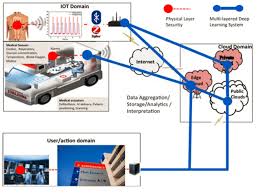Understanding the Xn-AP: The Xn Application Protocol Explained
telcomatraining.com – In the ever-evolving landscape of technology, the need for efficient and reliable communication protocols has become paramount. One such protocol making waves in the tech industry is the Xn Application Protocol (Xn-AP). This article provides a comprehensive understanding of what Xn-AP is, how it works, and its importance in modern systems.
What Is the Xn Application Protocol?
The Xn Application Protocol, commonly referred to as Xn-AP, is a standardized protocol designed to facilitate seamless data exchange between diverse systems and applications. Its core objective is to enable interoperability and streamline communication in complex ecosystems. This protocol is widely adopted in industries that demand high-performance and low-latency data exchanges, such as telecommunications, IoT networks, and enterprise software solutions.
Key Features of Xn-AP
- Interoperability
Xn-AP is designed to support communication between heterogeneous systems, regardless of their underlying architecture or programming language. This ensures that systems with different configurations can interact without compatibility issues. - Scalability
The protocol is built to handle large volumes of data and accommodate the growth of systems. This makes it ideal for applications that anticipate scaling in size or complexity over time. - Security
Robust security mechanisms, including encryption and authentication, are integral to Xn-AP. These features ensure that data integrity and privacy are maintained during transmission. - Low Latency
Xn-AP is optimized for minimal delay, making it suitable for time-sensitive applications like real-time communication, online gaming, and financial transactions. - Flexibility
With support for various data formats and transmission methods, Xn-AP can adapt to the unique requirements of different applications.
How Does Xn-AP Work?
At its core, Xn-AP operates on a client-server model, where one system (the client) requests information or services from another system (the server). The protocol defines a set of rules and formats for these requests and responses, ensuring consistency and predictability in communication.
The typical workflow of Xn-AP involves the following steps:
- Connection Establishment
The client initiates a connection request to the server. Once authenticated, a secure channel is established for data exchange. - Data Transmission
Using predefined message formats, the client and server exchange data. These messages are structured to include metadata, ensuring efficient processing and routing. - Error Handling
In the event of transmission errors or unexpected conditions, Xn-AP employs error-detection and correction mechanisms. This ensures reliable communication even in challenging environments. - Session Termination
Once the data exchange is complete, the session is terminated gracefully to free up resources and maintain system efficiency.
Applications of Xn-AP
The versatility of Xn-AP makes it applicable across various industries. Here are some notable use cases:
- Telecommunications: Facilitating seamless data exchange between network nodes and enabling efficient resource management.
- Internet of Things (IoT): Connecting devices with different protocols to create cohesive and interoperable IoT ecosystems.
- Enterprise Software: Ensuring smooth communication between business applications, such as CRM and ERP systems.
- Real-Time Systems: Supporting low-latency operations in sectors like finance, healthcare, and autonomous vehicles.
Advantages of Xn-AP
The adoption of Xn-AP offers numerous benefits:
- Enhanced Efficiency: Its standardized approach reduces the complexity of integrating diverse systems.
- Cost-Effectiveness: By simplifying development and maintenance, Xn-AP lowers operational costs.
- Improved User Experience: Faster and more reliable communication translates to better performance for end users.
- Future-Proofing: Its scalability and adaptability make Xn-AP a sustainable choice for evolving technologies.
Challenges and Considerations
While Xn-AP offers many advantages, implementing it is not without challenges. These include:
- Complex Setup: Initial configuration can be intricate, especially for large-scale deployments.
- Learning Curve: Developers may require training to fully leverage the protocol’s capabilities.
- Dependency on Standards: Deviations from standardized implementations can lead to compatibility issues.
Conclusion
The Xn Application Protocol is a powerful tool for enabling seamless and secure communication in modern systems. Its ability to handle diverse requirements, coupled with its robust feature set, makes it a valuable asset across industries. As technology continues to advance, protocols like Xn-AP will play an essential role in driving innovation and ensuring interoperability in an increasingly connected world.
By understanding the fundamentals of Xn-AP, businesses and developers can make informed decisions about its implementation, unlocking new opportunities for growth and efficiency.







